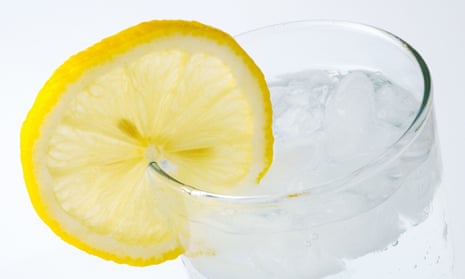British drinkers have been quaffing gin in record amounts during 2016, buying 40m bottles in a spending spree that outstripped sales growth in beer and sparkling wine.
Annual gin sales rose 16% to smash through the £1bn barrier for the first time in the UK, leading the drink industry to declare 2016 the “year of gin”.
About 40m bottles were sold over the past 12 months, enough to make 1.12bn gin and tonics, or roughly 28 for every person of legal drinking age in the UK, according to the Wine and Spirit Trade Association. This was an increase of 200m G&Ts compared with 2012, signalling that gin continues to grow in popularity.
A growing thirst for the spirit has also caused a surge in the number of distilleries, with about 40 opening in 2016.
In 2010, there were only 116 distilleries in the UK, according to HM Revenue & Customs, but about 100 have opened in the past two years alone.
Brockmans, which claims to be the fastest-growing premium gin, said its sales had more than doubled in the first six months of 2016.
“Drinking habits have changed dramatically in the last five years and the premium gin market has been one of the biggest winners,” said its founder and chief executive, Neil Everitt. “The emergence of new-style gins and premium mixers is driving sales before food, particularly in gastro pubs.”
He added that the weakness of sterling had boosted sales in Spain, one of the company’s biggest markets.
London-based distiller Sipsmith, founded in 2009 at the forefront of a wave of new distilleries, said it was proud to be part of the “gin renaissance”.
“We launched the first copper pot gin distillery in London for nearly 200 years in 2009, tapping into the consumer desire for provenance, authenticity and ultimately quality,” said founder Fairfax Hall.
“Since then a wave of craft distilleries has swept across the country.”
The WSTA also revealed that foreign drinkers are importing gin in record volumes, with exports to America particularly strong. The trade body said gin exports to the US were up 553% in the past decade, reaching £159m in 2015.
It put the drink’s popularity with Americans down to hit British TV shows such as Downton Abbey and films including the James Bond franchise featuring the tipple.
Drinks industry experts said gin’s rise was likely to continue, with drinkers likely to upgrade to more expensive brands as they develop a taste for it.
Humphrey Serjeantson, research director of International Wine and Spirit Research, said: “As we see it, the gin boom is far from over; gin is set to continue its long-term repositioning from mother’s ruin to exciting and dynamic category.”
He said growth would be driven “by premium and above brands, with a wide flavour range combining with localism and, increasingly, terroir playing a key role.
“This will include the growth of a real ultra-premium segment (priced at £45.00 and over).
WSTA chief executive Miles Beale said: “There are many reasons why people may not feel like celebrating 2016 but the WSTA are pleased to give you something happy to reflect on – 2016 can now be remembered as the ‘Great British Gin Take Off’.”
According to the WSTA, the next fastest growing category was sparkling wine including champagne which rose 12%, ahead of beer which rose 2% and wine which fell by 1%. Overall, the wider British alcohol market rose 2% to £40bn.
Among wines, the WSTA identified a rise in the popularity of New Zealand and Argentinian vineyards at the expense of European and US wines. Annual sales of New Zealand wines and Argentinian wines grew, while Spanish, American, Italian and French wines all experienced more muted growth or declined in popularity.
The annual survey also revealed changing tastes in the wines that people buy to drink at home. Among the reds, sales of Merlot were up 7% to £321m, while Shiraz were up 6% to £300m and Tempranillo was flat at £214m.
The boom in sales of New Zealand wines helped Sauvignon Blanc lead the way among white wines, with sales up 10% to £708m. But Pinot Grigio and Chardonnay both fell out of favour, each falling by 4% to sales of just above £400m each.
The WSTA said the government cut duties on spirits, which it warned would boost the industry and the Treasury’s coffers. It said the cut in spirits duty in the 2015 budget had delivered a 4.1% increase in duty to £125m, adding that the UK spirit industry was “one of the most heavily taxed in Europe”.











Comments (…)
Sign in or create your Guardian account to join the discussion